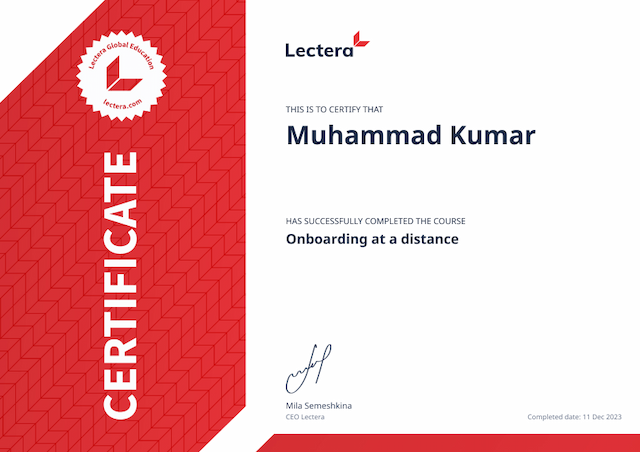One of the most important tasks of the employer is the adaptation of employees to the corporate culture, their output to a high level of efficiency in a short time. A new job is a place to realize ambitions and find interesting acquaintances, a way to make money. But at the same time, this is an unusual environment, and no one will guarantee that the new job will meet the expectations of the employee, and the new colleague will meet the expectations of the employer.
Adaptation of new employees at a distance is complicated by restrictions in communication, control, timely assistance to the newcomer. They may feel unnecessary and abandoned, experience difficulties in work, have a lot of questions, the solutions of which can not be “spied” by colleagues. If you are a manager, want to take care of your employees and develop your team, then training on our course will help you with this!
You will learn how to adapt staff to a new place of work with the help of onboarding. We'll tell you what it is. The organization of a high-quality onboarding system affects the employer's brand, the quality of employees' work, and the company's income. In the process of training, we will tell you how to make a plan for the adaptation of a new employee and conduct adaptation conversations among beginners. You will learn all about the system of remote mentoring, learn the concept of “budding”, understand how to implement it through calls, video chats, text messaging, and other virtual forms of communication. You'll also learn how to introduce new employees to colleagues via video conferencing or internal chats.
You will receive an algorithm of actions when transferring an employee to a higher position, learn how to help them overcome fears, acquaint them with a new role, external and internal environment of the company. If you cannot control the onboarding of staff, you can use chatbots, which you will learn about in one of the lessons. With their help, it will be possible to automate information, conducting surveys, training, and counting statistics. You will understand that the foundation of the adaptation process is the mutual respect of the new employee and the company.
The acquired knowledge and skills will help you to easily implement the onboarding of employees in your company. This will open up new opportunities for growth and development for you and your team!
